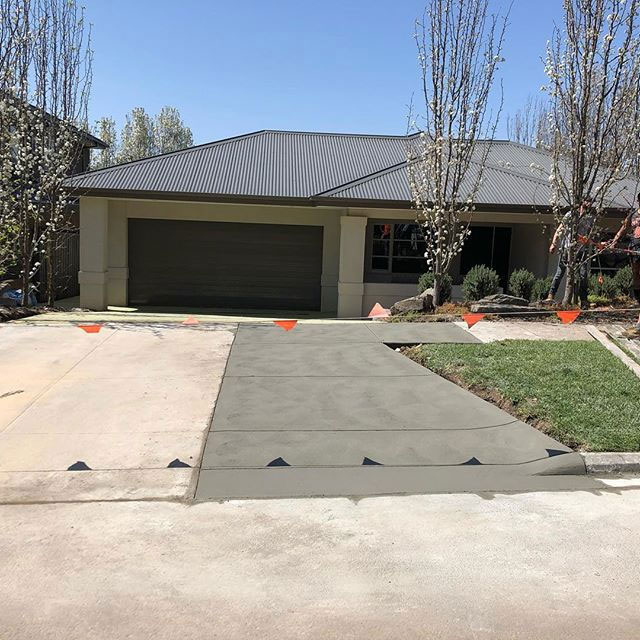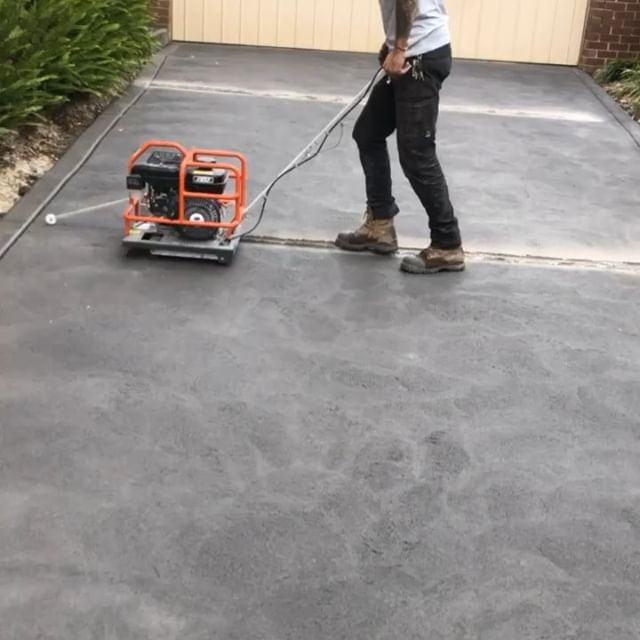Sealing concrete driveways can be a great way to protect your investment and improve the overall appearance of your home. However, if not done correctly, the entire process can result in a number of mistakes that can lead to costly repairs later. Here are some of the most common mistakes to avoid when sealing your concrete driveway.
Top 5 Concrete Sealing Mistakes You Must Avoid
From not properly cleaning and preparing the surface before applying the sealant to using the wrong type of sealant, we will cover the most important steps to avoid costly mistakes. With these tips and best practices in mind, you can ensure that your concrete sealing project is successful.


Not Cleaning the Surface Properly
Before applying concrete sealers, it is important to clean the surface of your new concrete driveway or concrete patio thoroughly. This includes removing any dirt, debris, oil stains, and even old concrete sealer. Skipping this step can result in an uneven sealant application and a less-than-satisfactory concrete surface.
Using the Wrong Type of Concrete Sealant
Not all sealers can be used for every sealing process, and using the wrong type of concrete sealer to seal unsealed concrete can cause problems. That is why it is important that you use the right sealant.
For example, using a sealer for sealing driveways that are not designed for outdoor use is bad sealant work, whereas using a glossy sealant can make your entire driveway slippery and dangerous. Check with the professional team here at Skyco Group for the best advice on sealing concrete.
Applying Sealant Too Thickly
Over-applying sealants can lead to a number of problems and could possibly be one of the worst mistakes. It’s necessary that you follow these expert tips to avoid ruining the sealing process.
Whether it’s a sealing project for your new concrete driveway or a concrete slab, applying concrete sealer too thickly can lead to problems such as bubbling, cracking, and peeling on concrete and other surfaces.
It is important that you rely on professionals like the team here at Skyco Group for sealant application on concrete driveways, walls and more. Get in touch with Melbourne’s best concrete experts by giving us a call on 0452461381.
Not Allowing Adequate Drying Time in the curing process
Sealant application is a time-consuming process. You need to use a sealant remover to remove any old sealant and clean the area before starting the sealing process. However, even after the entire process is over, care must be given so that it can fully cure.
After applying the sealer, it is important to allow it to dry completely before using the driveway or parking on it. Not allowing enough drying time can result in tire marks, footprints, and even damage to the sealer.
Not Resealing Regularly
A common mistake is thinking that once you have sealed your driveway, it will last forever. However, it’s important to reseal your concrete driveway every few years for protecting it from cracks that come with age, weather and dust.


Pro Tips For Sealing Concrete Driveways
By avoiding these common mistakes, you can ensure that your concrete driveway or anything else is properly sealed and protected. It’s also important to consult with a professional or expert before starting the process. They can help you to understand the right type of sealer, the right amount of sealer to apply, and the correct drying time.
Remember, sealing your concrete driveway is an investment, and it’s important to take the time to do it right in order to protect your investment and enjoy a beautiful, long-lasting driveway. Here are some pro tips that can help you avoid these common mistakes.
Check Weather conditions
Sealing concrete on a bright sunny day is more ideal than attempting to do it with the rain leaving stains and making it difficult to seat the concrete. So, make sure to choose the right day for sealing concrete driveways.
Check for The Tools Needed and Safety gear
When applying a concrete sealer, it is crucial to protect yourself by using safety gear such as goggles, protective clothing, and gloves to prevent exposure to harsh chemicals, stains and flying debris or dirt.
To ensure a smooth and seamless application process, have all necessary tools ready, such as an asphalt brush, paint sprayer, chemical stripper, shop vacuum, paint roller, degreaser, and concrete sealants.
Check your existing tools before purchasing, and remember that all of these tools are readily available at hardware stores and can be used for future projects.
Be Prepared
To ensure that concrete is entirely prepared for sealant application, make sure that the concrete driveway is free from debris, dirt, and other impurities. Use a degreaser to remove any stains, oil, and grease on the driveway. Have one final sweep and vacuum of the concrete driveway before the sealant application.
After the power wash, the concrete driveway must be completely dry. So wait till the water rolls off the surface. Wait for 24 hours or more before proceeding with the next step.
When applying the sealant, make sure to apply two thin coats of the sealant and leave the first coat to completely dry for about 2 hours before applying the second coat.
After application, the driveway needs to dry completely for about three days. During this time, it is best to have a barricade or fence around the driveway as a reminder that the driveway is off-limits and can’t be used while the sealant is drying.
FAQ
Q1: How can I avoid applying a too-thick coat of sealant?
Ans: To avoid applying too thick of a coat, it’s essential to read the manufacturer’s instructions and follow their recommended application techniques. It’s also helpful to use a roller or brush specifically designed for applying sealant.
Q2: What should I do if I apply sealant on a damp or wet surface?
Ans: If you apply sealant on a damp or wet surface, the sealant will not adhere properly and will likely peel or flake off. To avoid this, make sure to allow enough time for the concrete surface to dry completely before applying the sealant.
Q3: Can I use a concrete sealer meant for a different type of surface on my concrete driveway?
Ans: No, it’s important to use a sealant that is specifically designed for concrete surfaces. Using a sealant meant for a different type of surface can result in poor adhesion and potential damage to the concrete.
Q4: Is it necessary to put a barricade or fence around the driveway while the sealant is drying?
Ans After applying the sealant, the driveway needs to completely dry for about three days. During this time, it is best to have a barricade or fence around the driveway as a reminder that the driveway is off-limits and can’t be used while the sealant dries.
Published Date : January, 20 2023
Author information...

